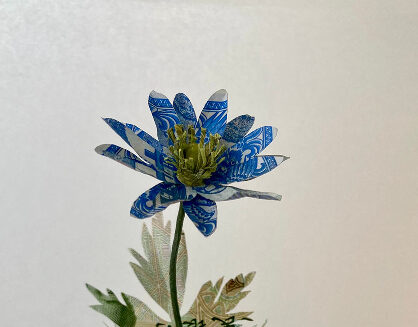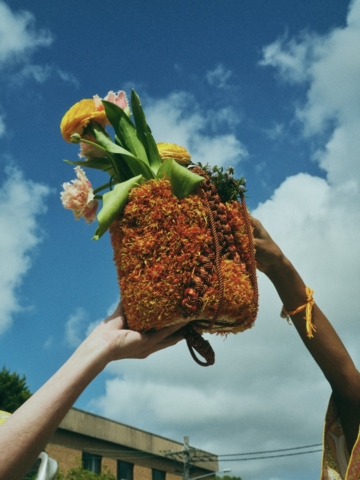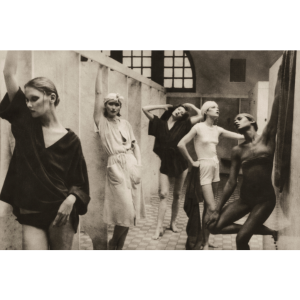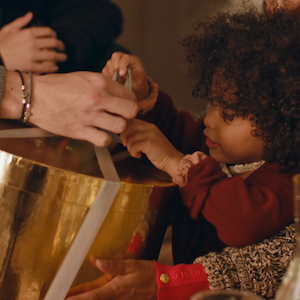A Queer View
By Louis Lefaix
How do you feel when you gaze upon a naked body in art? Are you studying the form, texture, the colour in a painting or statue? We have been admiring the naked form for hundreds even thousands of years in the world of creativity. Whether seen in a gallery or in more unusual settings, does our interaction with the nude depend on where we see it? What becomes the difference between a nude in an art gallery or a nude body in a cinema or print? Does an erotic response come when the maker entwines it into the work? Or is it how we, the viewer, choose to react? Does it change emotions dependent on who the end recipient is or even who created the work? And does, one wonder, do the images become more thrilling when coming from an underground place? Find out how the naked body can elicit different reactions here in A Queer View.
Nudity is a basic form of existence. Seen with works of art as old as the Dancing Girl, Mohenjo-Daro 2000 BC it has always been depicted in art. Whether it be through sculpture or paintings. With depictions as beautiful as the Venus de Milo of Alexandros of Antioch or Michelangelo’s David. Without forgetting the Farnese Hercules by Glycon of Athens.

The Farnese Hercules, Glycon of Athens 216 AD
These pieces were stylized to be the perfect form. Bodies to be admired within the framework of artistic brilliance. Here perfection in form may well be the cornerstone of the works. The depiction of humans at their purest.
The work and intention of the creator will usually be the emotional end result for the viewer. This also may well be influenced by the setting. If you are in a gallery, you’re more likely to associate the nude with art, than say erotica.
With a nude image, in works of erotica, there lies a sexual charge created by the artist that directs the viewer’s gaze. In the modern day, we may think more of titillating images created by men for men of female nakedness. Yet we also often see the female nude by both men and female image makers as art, alongside those with a slightly erotic frisson.

Torses Nus- Danielle, 1985 © Jeanloup Sieff, Courtesy of Hamiltons Gallery
Coincidentally there are currently two exhibitions taking place that explore the nude with separate points of view.
The first is titled Mostly Nude and presented by Hamiltons Gallery. It comprises some of the most iconic images of the genre by some of photography’s most influential artists.
Featuring works of art such as Naomie Campbell photographed by Herb Ritts, Pamela Anderson by Sante d’Orazio and more. These artists were able to capture a certain sexual energy as well as capture the beauty and physical perfection of form in these pieces. Art maybe meets a little charged emotion.

Odalisque I, New York, 1943 © Horst P. Horst, Courtesy of Hamiltons Gallery
This form of imagery is relatively commonplace we don’t seem to think twice. Yet images of sexualised men have not been nearly as commonly depicted as the nude female form. Often this form of soft erotica is determined by context and was in the past heavily influenced by what was regarded as acceptable at the given time.
Take for example the gaze on the male nude by the male for the male. In the UK the 1857 Obscene Publications Act made imagery containing queer erotica a criminal offence. This lasted up until the Sexual Offences Act of 1967, which legalised acts of homosexuality for those over 21. (reduced down shockingly in 1994 to 18 to be on par with heterosexual sex.

Bill Green (Vince), Monotosh Roy, c 1950s. Courtesy Rupert Smith Collection
Yet even after the decriminalization of homosexuality, it remained secretive in art. One thing this censorship did was give birth to a new underground movement. Male-on-male erotica; the pleasure of gazing at nude men created by men for men.
During a period that ranged from the 1930s to the 1990s, a clandestine queer visual culture grew. Especially prominent in London, this movement depicted male nudity in a queer context. The male physique served as a canvas for the photographers to relay their messages. They advocated for gay liberation through this erotic imagery.
The movement depicted the male body drawn from art, physical culturists, and pornography. It was especially prevalent across Highgate, Soho, Brixton and Euston. The nudes would always feature the “posing pouch”, a symbol of male nudity. This modest piece of fabric was used to cover the male genitals while showing the male body as much as possible. It was employed to circumvent the full ban on nudity.

Highgate Men’s Pond, Keith Vaughan, 1933
The clandestine erotica produced by the movement was that of true art. It was the celebration of the male form photographed by men and to be admired by men. But it also transcended the values of nudity to become a form of resistance to oppression.
Many of these works, underground and hidden for so long, produced during the clandestine era are going to be unveiled to the public for the first time.
Indeed, the Photographer’s Gallery’s new exhibition, “A Hard Man Is Good To Find!” pays homage to the movement. It will chart over 100 works of queer photography of the male physique. These pieces range from the 1930s to the early 1990s. It will feature works such as Keith Vaughan’s “The Portobello Boys” made in 1933 in North Kensington, up to Martin Spenceley’s street portraits in Euston in the 80s.

Martin Spenceley, 1980s.Courtesy of the Michael Carnes Collection
The exhibition will display over 60 years of queer photography of the male physique from 2 March to 11 June. And for the first time, these art pieces will be enjoyed freely.
50 years ago there was shame and even imprisonment around men gazing at other men, and it only became legal as mentioned in 1994 for queer sex to be legal at the same age as straight sex which feels quite shocking for a society like us now.
Also, it’s fair to say the line between erotica and art has become blurred as we become more comfortable and open-minded towards individual sexuality. It took a lot of brave creators to stop making something as natural as the human body illegal.
Learn more about Mostly Nude on the Hamiltons Gallery website here
Find out more about A Hard Man is Good to Find on the Photographer’s Gallery website here
If you enjoyed reading It’s a Queer View why not read Women’s Hands-On
.Cent Magazine London, Be inspired, Get involved





